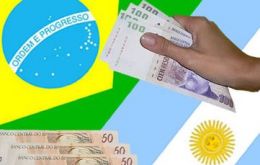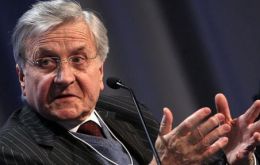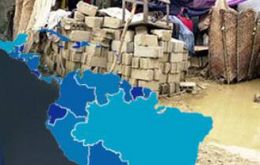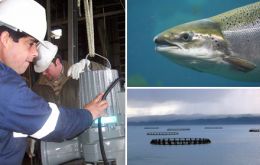MercoPress. South Atlantic News Agency
Stories for September 2010
-
Monday, September 13th 2010 - 04:03 UTC
Argentina closer to becoming Brazil’s second trade partner

Argentine trade with Brazil in 2010 is going to increase significantly and could replace United States as the second most important importer of Brazilian goods, said Foreign Affairs minister Celso Amorim.
-
Monday, September 13th 2010 - 04:00 UTC
Central bankers agree new rules to prevent a repeat of the financial crisis

Central bank governors and senior regulators have agreed new rules designed to prevent a repeat of the recent financial crisis. At a meeting in the Swiss city of Basle, they agreed a deal requiring banks to hold more capital in reserve.
-
Monday, September 13th 2010 - 03:49 UTC
Former president Kirchner leaves hospital and recovering satisfactorily

Former Argentine president left Los Arcos hospital Sunday a few minutes after 20:00 hours next to his wife President Cristina Fernandez de Kirchner. A presidential press officer said the Argentine leader would be leaving at 23:00 hours given the “satisfactory evolution” of the emergency angioplasty he underwent Saturday night.
-
Monday, September 13th 2010 - 03:47 UTC
Goldberg ratifies Fidel: “The Cuban model doesn't even work for us anymore”

The US journalist Jeffrey Goldberg from The Atlantic magazine ratified his version of the interview with Fidel Castro, when he confessed that the Cuban model is no longer working, not even in the island, in spite of the Cuban leader attempt to amend his words.
-
Sunday, September 12th 2010 - 07:29 UTC
A view from The Economist: ‘US and Latin America, nobody’s backyard’

Under the heading of “The United States and Latin America: Nobody’s backyard”, The Economist publishes one of its leading articles, supported by special pieces dedicated to the region’s potentialities, recent successes and shortcomings, mainly triumphalism and complacency.
-
Sunday, September 12th 2010 - 07:23 UTC
Falklands’ representative to address challenge of sovereignty in small states

“The challenge of sovereignty in small states” is the issue to be addressed by Falkland Islands member of the Legislative Assembly Dick Sawle at the Commonwealth Parliamentary Association (CPA) meeting in Kenya.
-
Sunday, September 12th 2010 - 07:12 UTC
Two million people have visited Chile’s pavilion at the Shanghai Expo

Lu Hongxiang from Xin Xiang, China was recently the 2 millionth visitor at the Chilean pavilion at the Shanghai Expo that runs from May 1 to Oct 31, 2010.
-
Sunday, September 12th 2010 - 07:06 UTC
Salmon industry in Magallanes planning to boost output to 80.000 tons by 2020

Magallanes region in the extreme south of Chile should see farmed-salmon production jump from 6.000 tons to 80.000 tons in a decade, according to Drago Covacich, general manager of Nova Austral.
-
Sunday, September 12th 2010 - 07:02 UTC
World conference to address unemployment and creating decent jobs

The International Labour Organization (ILO) and the International Monetary Fund (IMF) are hosting a joint conference on 13 September in Oslo, Norway to explore new ways of generating jobs as part of a sustainable recovery from the global economic crisis.
-
Sunday, September 12th 2010 - 06:57 UTC
Glow of eyes could help detect mad cow disease, says Iowa university report

Cattle infected with mad cow disease give off a tell-tale glow in their eyes, according to new research published in the journal Analytical Chemistry. In future, the discovery could lead to a long-sought test to detect infection with the agent that causes mad cow disease, preventing it from spreading throughout the food supply for humans.
